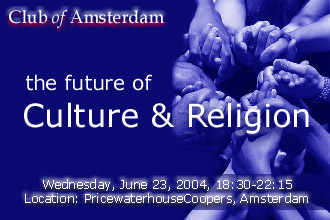by Liliane Voye
As described by Dobbelaere (1981), secularization – considered as a process on the macro-level – is in general still an unquestionable fact in Europe. Functional differentiation is persisting; the organized world is based on impersonal roles and on contractual patterns. The privatization of religion signifies not only that institutional religion loses its capacity to exercise an impact on public affairs but also that religion is considered as a matter of personal choice. This choice is enlarged by the numerous opportunities which have appeared in the “religious market” and, among other things, by the development of New Religious Movements. Such a context stimulates the relativization of religious messages, and their acceptance appears to be more and more oriented to a “this worldly” end, to the immanent level of everyday reality.
However, at the same time that unbelief is growing and the numbers of the unchurched are increasing (Jagodzinski and Dobbelaere 1995b; Dobbelaere and Jagodzinski 1995), different facts testify that religion is not absent from the scene. Considering Europe, we can see that many individuals seem to set up some kind of “religious patchwork,” using various existing resources which they compose according to their own needs, views, and experiences (Voye 1995). At different levels, it appears also that the religious reference is used to affirm a territorial identity (Voye 1996) and so to differentiate oneself from others considered as dangerous or inferior or simply as different. We may also see that the autonomy of the different functions – notably, the political and the juridical functions – is not always as radical as it was supposed to be in the first phase of modernity.
Taking into account this apparent paradox – the confirmation of the process of secularization and the effective presence of religious references not only at the individual level but also at the macro level – I advance some reflections which – considering the European case and the Catholic church – might suggest that the actual situation is not exactly the same as it was twenty-five years ago, i.e., when Dobbelaere defined secularization as he did. We are no longer in the heart of a triumphant modernity, and this induces different effects in the religious field as in any other field.
To develop this point of view, I will discuss some aspects of what I will call “advanced modernity” – considered more as a factual situation than as a theory and I will try to show how these aspects modify the position of the religious field, without invalidating the effects of secularization. In contrast to what is often suggested, there is no retour, no return to a pre-modern situation. I suggest, rather, that institutional religion may no longer presume to impose its views, its doctrine, its morals, its rules, either in public affairs or on individuals who claim their autonomy. To be listened to, religious spokespersons have to modify their discourse and its presentation. The religious actor has also to re-legitimize some religious dimensions, which, during modernity, were eliminated or at least reduced in order to rationalize religion. To survive or to have a chance still to play a role in society, the religious actor will offer himself as a resource for other systems, i.e., to develop its “performances” (Luhmann 1990) – by showing its capacity to solve problems generated in other fields but not solved there. And we shall see that the political field in particular, at various levels, not only accepts this but sometimes requires it directly.
In this perspective, I review several points that I consider a consequence of a context of advanced modernity, without pretending to be exhaustive. A first characteristic is the relative scepticism toward science, because of its “perverse effects,” its incapacity to solve every problem (contrary to what was hoped for during modernity), and its long-term character. This induces two possibilities for religious performances: one on the level of the political field, which is supposed to regulate science and its applications, and one on the individual level. Then, I will take into account the disrepute into which the state has fallen and the correlative growing importance of Europe, on the one side, and of “regions,” “nations,” and different particular identifications on the other. For these last two levels, the Catholic church is foremost in offering its resources. I will then consider the actual trend which tends to evolve from laws considered as general and substantial to laws which take into account particular and situational aspects – among others, those of religious diversity. At the same time, the state, being in search of allies, tends to reaffirm its ancient collusion with the main Christian religions.
The full article is available: click here





Customer Reviews
Thanks for submitting your comment!